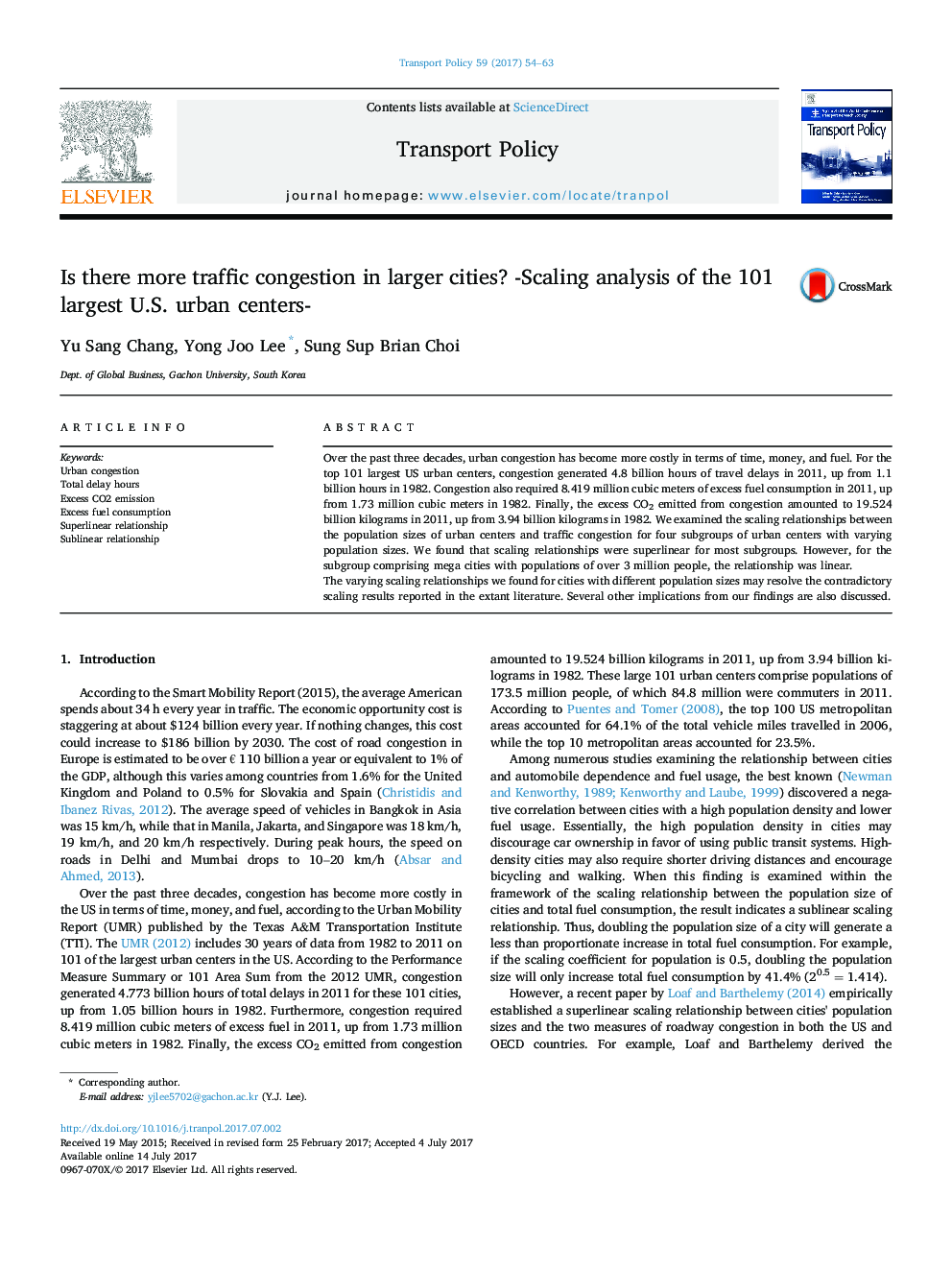| Article ID | Journal | Published Year | Pages | File Type |
|---|---|---|---|---|
| 5119131 | Transport Policy | 2017 | 10 Pages |
â¢We examined whether larger cities experience more traffic congestion.â¢In general, larger cities have more congestion.â¢However, the largest cities have equal congestion.â¢The largest cities may have environments more favorable for growth.
Over the past three decades, urban congestion has become more costly in terms of time, money, and fuel. For the top 101 largest US urban centers, congestion generated 4.8 billion hours of travel delays in 2011, up from 1.1 billion hours in 1982. Congestion also required 8.419 million cubic meters of excess fuel consumption in 2011, up from 1.73 million cubic meters in 1982. Finally, the excess CO2 emitted from congestion amounted to 19.524 billion kilograms in 2011, up from 3.94 billion kilograms in 1982. We examined the scaling relationships between the population sizes of urban centers and traffic congestion for four subgroups of urban centers with varying population sizes. We found that scaling relationships were superlinear for most subgroups. However, for the subgroup comprising mega cities with populations of over 3 million people, the relationship was linear.The varying scaling relationships we found for cities with different population sizes may resolve the contradictory scaling results reported in the extant literature. Several other implications from our findings are also discussed.
